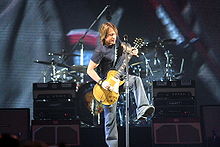Piano Sheets > Keith Urban Sheet Music > Tonight I Wanna Cry (ver. 1) Piano Sheet
Tonight I Wanna Cry (ver. 1) by Keith Urban - Piano Sheets and Free Sheet Music

About the Song
Other avaliable versions of this music sheet: Version 1 Version 2
"Tonight I Wanna Cry" is a song recorded by Australian country music artist Keith Urban. It was the last official single off Urban's Be Here album.
The song was later sung by Ace Young on American Idol on April 4, 2006, which was designated a country music theme. Chad Doucette sang it on Canadian Idol. It was also covered by Chris Richardson on American Idol on March 6 2007
Urban's version was also featured in the January 31, 2007 Medium episode, Very Merry Maggie.
Tonight I Wanna Cry was the last song to play on KZLA in Los Angeles when the station switched formats from country to dance.[citation needed] Keith Urban (born Keith Lionel Urban; 26 October 1967 in Whangarei; New Zealand); is a Grammy- and ARIA-winning country music singer. Urban began his career in Australia; having moved there at an early age.In 1991; Urban released a self-titled debut album; and charted four singles in Australia.
Download this sheet!
About the Artist

Random article
Music sheets - what is all about? Back in the 19th century, songs in the United States were popularized by musicians through music sheets. It was only in the 1950s when musicians started to bring music sheets to bands so they could play, allowing more people to hear their compositions.
Simply, a music sheet is musical composition in printed form. It is composed of unbound sheets of paper where a musical notation of a song is printed. Many associate it with popular music. However, musicians say popular songs are not the only ones written down on paper. Many classical songs were published in music sheets and classical musicians performed even unfamiliar songs with these printed compositions.
(More...)
